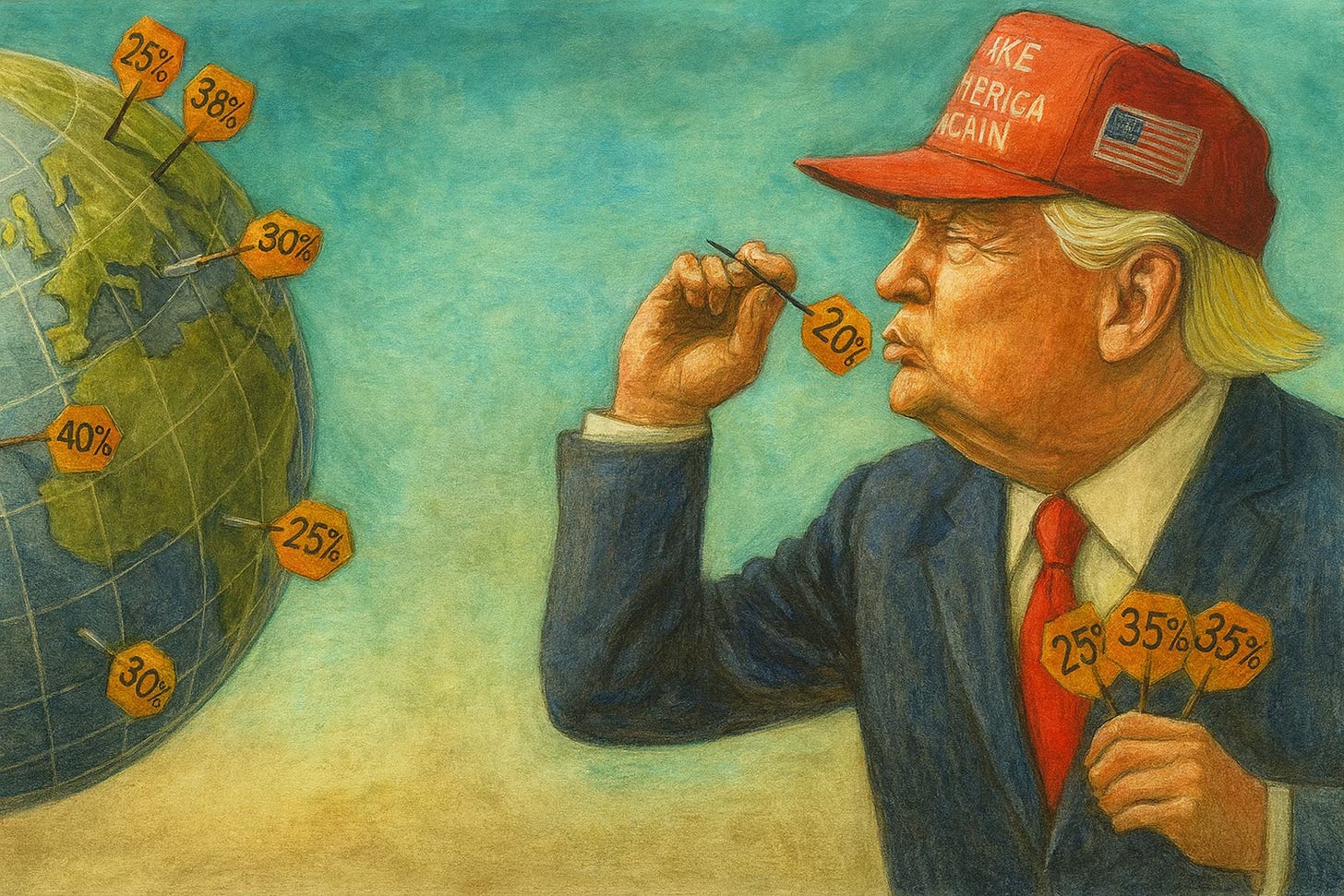So Much Winning
The tariff war that turned America’s breadbasket into China’s leverage.
The collapse did not start in Beijing or São Paulo.
It started in Washington, when politicians gambled America's farm economy on a tariff war they did not understand and could not control. The casualty list begins in the soybean fields of the Upper Midwest, where decades of planning and infrastructure were wiped out by a single retaliatory stroke of a Chinese pen.
This was strategic malpractice. Washington picked a tariff fight. Beijing pressed the nerve that would hurt most.
What followed was an export cliff.
In the first year after retaliation, U.S. soybean shipments to China fell 74 percent, from 32.9 million metric tons to 8.2 million. Prices sank below $8.50 a bushel—underwater for many growers. Local basis blew out as elevators choked on unsold supply. Ending stocks more than doubled past 900 million bushels and spilled into machine sheds and plastic bags.
China did not just punish. It pivoted.
And it pivoted to a substitute with scale… Brazil surged into the gap, roughly 30 percent higher exports to China in the first year, selling at premiums while American farmers sold at losses. Then Beijing made the shift sticky by financing the hardware that locks in supply—deep-water ports, railways, crushing plants. Vertical integration that hardwires Brazilian supply to Chinese demand for decades.
Even if every tariff disappeared tomorrow, the contest is no longer bean versus bean.
It is the United States versus a Brazil–China logistics machine built to bypass us.
Before the war, the U.S. held roughly 39 percent of China's soybean import market while Brazil had about 53 percent. By 2018-19, Brazil jumped above 70 percent and the U.S. slid to a humiliating 13 percent. After the celebrated Phase One deal? The U.S. clawed back only to about 32 percent.
The new order held.
This is how you turn a tariff tantrum into a long game. The U.S., once the supplier of first resort, is now a residual supplier—called in when Brazil hiccups or weather torches a South American crop. That translates to less pricing power, more volatility, and permanent leverage in Beijing's hands.
That's not tough negotiating. That's strategic self-debasement.
The Market Facilitation Program pushed roughly $28 billion into the countryside over two years. It kept lights on and notes paid. It also treated symptoms while ignoring the disease. Because payments were not tied to production cuts, the program subsidized status quo acreage right into an oversupplied market. The county-rate formula skewed outcomes—boosting some regions and larger operations more than the Midwestern family farms that took the direct hit.
Necessary tourniquet, political fingerprints.
Meanwhile, the real-world balance sheets bled. Banks tightened terms. Equipment plans froze. The consolidation flywheel sped up as stressed family farms became targets for better-capitalized operators and funds.
Chapter 12 farm bankruptcies surged by 20 percent to an 8-year high. Farm debt climbed to record levels, exceeding the crisis levels of the 1980s farm bust.
After 40 years of building the soybean industry around a single buyer, the question haunts rural America: Are we going to lose a generation of farmers because of the trade war?
Tighter credit means closures. A one-year problem becomes many.
Then came the Phase One photo op. The promise: China would buy big and restore the old order. Reality: purchases were inconsistent and repeatedly missed the grandiose targets. The architecture had already shifted; Beijing kept Brazil as the go-to and treated the U.S. like a swing option.
A pyrrhic victory with nice podium shots and lousy market share.
Then there is the conflict hiding in plain sight.
The Treasury Secretary fronting the China talks also owns thousands of acres of North Dakota farmland worth up to $25 million and generating as much as $1 million a year in rental income. Ethics officials warned about compliance failures with divestment agreements; promises were made to sell by December 15. The department would not say if there are recusals from certain aspects of negotiations.
The conflict could not be plainer.
The trade war didn't force China to decouple from American agriculture; it gave Beijing the political cover to accelerate a strategy it already wanted and to cement a rival supply chain that cuts the U.S. down to size. We handed them the excuse, then paid ourselves $28 billion to pretend we hadn't.
If negotiators produce a win, ask who actually wins. If they don't, ask why a principal at the table had that much skin in the outcome.
Either way, the grain piling up in the Dakotas is a monument to strategic failure.
China played the long game. Washington played to the news cycle. Until we rebuild an agricultural model that is not hostage to Beijing's whims, we will keep stacking beans in the dark and calling it policy.



The entire regime is corrupt, blatantly so. Yet most of the electorate fight a culture war. The real war has always been the wealthy vs the rest of this country and the world.
China has, indeed, played the long game. Politicians and the donor class don’t care who are financially ruined as long as they become richer.
Trump and his Cabinet of Cannibals has destroyed America’s standing in the world and its fall as a superpower. It’ll take a generation or more to restore the U.S.’s reputation and trustworthiness.
China is now THE superpower. Americans will need to understand this and who’s responsible for the financial meltdown that’s getting worse by the day. -Anyways, that’s my five cents worth.-
Good article. I look forward to more of your writing and expertise. I’ll be sure to share them on social media.
Disgusting